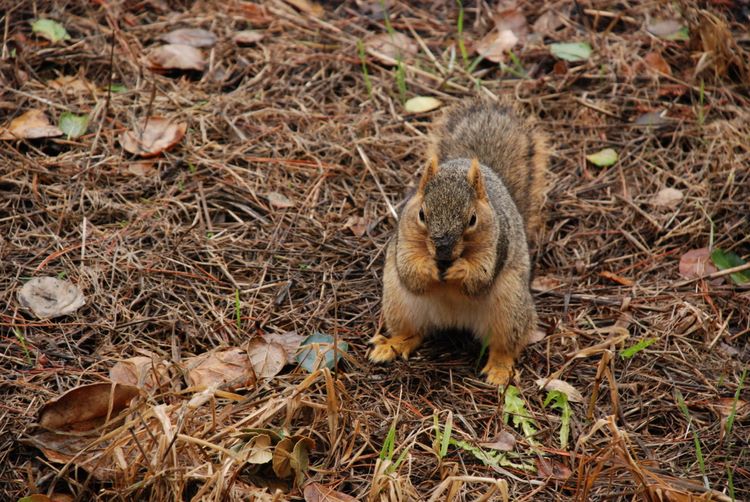Squirrel with acorn, dug up after the tannins have been leeched out. See
Hunter Angler Gardener Cook for more (he's the one who took our pig head). Excerpt:
Why more people donít eat acorns is no mystery: It is a plot perpetrated on us humans by a vast squirrel conspiracy, aided and abetted by blue jays and their magpie collaborators. OK, maybe not. But we can learn something by watching squirrels.
Squirrels donít bury every acorn they find, you know. Scientists observing squirrel behavior back East noticed something unusual. The fuzzy varmints would seek out white oak acorns and gorge themselves on them, then dash off to find the acorns of other oaks, mainly the red oak. Powered by a meal of white oak acorns, the squirrels would then spend hours burying red oak acorns in the ground. Why?
Turns out white oak acorns are extremely low in the bitter tannins that give all acorns such a bad name. Red oak acorns are high in tannins. But tannins are water soluble. So by burying them, the squirrel hid the acorn from the stealing blue jays (and rival squirrels) and plunked it into water-rich soil. After rains and snow and freezing and thawing, the tannins leach into the soil and leave the red oak acorn as sweet as a white one.
This brilliant feat performed by what is essentially a bushy-tailed rat is the best way of showing you that there are acorns and then there are acorns: Some really are so bitter theyíre not worth working with. But others, like the Eastern white oak, the bellota oaks of Europe and the Emory oak of the Southwest, are sweet enough to need minimal or no processing.
Amazing, no?

